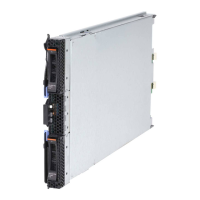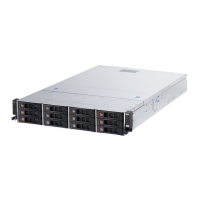Chapter 3. Virtualization 85
The PowerVM Editions Web site also contains useful information:
http://publib.boulder.ibm.com/infocenter/systems/scope/hw/index.jsp?topic=/arecu/a
recukickoff.htm
3.3.2 Logical partitions
Logical partitions (LPARs) and virtualization increase use of system resources and add a new
level of configuration possibilities. This section provides details and configuration
specifications about this topic. A logical partition can be regarded as a logical server, capable
of booting an operating system and running a workload.
Dynamic logical partitioning
LPAR was introduced with the POWER4™ processor-based product line and the IBM AIX
Version 5.1 operating system. This technology offered the capability to divide a pSeries®
system into multiple logical partitions, allowing each logical partition to run an operating
environment on dedicated attached devices, such as processors, memory, and I/O
components.
Later, dynamic logical partitioning increased the flexibility, allowing selected system resources
(such as processors, memory, and I/O components) to be added and deleted from logical
partitions as they are executing. IBM AIX Version 5.2, with necessary enhancements to
enable dynamic LPAR, was introduced in 2002. The ability to reconfigure dynamic LPARs
encourages system administrators to redefine available system resources dynamically to
reach the optimum capacity for each defined dynamic LPAR.
Micro-partitioning
Virtualization of physical processors in POWER5, POWER6, and POWER7 systems
introduces an abstraction layer that is implemented in POWER Hypervisor. Micro-partitioning
is the ability to distribute the processing capacity of one or more physical processors among
one or more logical partitions. Thus, processors are shared amongst logical partitions.
Micro-partitioning technology allows you to allocate fractions of processors to a logical
partition.
The POWER Hypervisor abstracts the physical processors and presents a set of virtual
processors to the operating system within the micro-partitions on the system. The operating
system sees only the virtual processors and dispatches runable tasks to them in the normal
course of running a workload.
From an operating system perspective, a virtual processor cannot be distinguished from a
physical processor, unless the operating system has been enhanced to be made aware of the
difference. Physical processors are abstracted into virtual processors that are available to
partitions. The meaning of the term
physical processor in this section is a processor core.
When defining a shared processor partition, several options have to be defined:
Processing Units
The minimum, desired, and maximum processing units. Processing units are defined as
processing power, or the fraction of time that the partition is dispatched on physical
processors. Processing units define the capacity entitlement of the partition.
Cap or Uncap partition
Select whether or not the partition can access extra processing power to “fill up” its virtual
processors beyond its capacity entitlement, selecting either to cap or uncap your partition.
If spare processing power is available in the processor pool or other partitions are not
